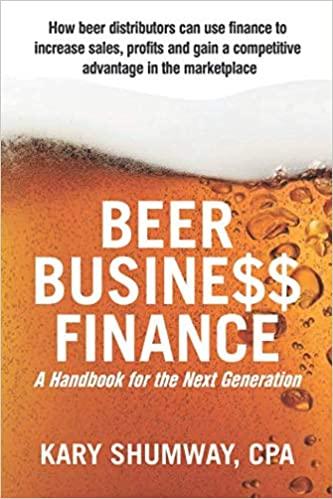Answered step by step
Verified Expert Solution
Question
1 Approved Answer
Topic 1 1 Risk vs Reward Exercise 1 : Rewards An investor thinks that the share price of company ABC is going to increase in
Topic Risk vs Reward
Exercise : Rewards
An investor thinks that the share price of company ABC is going to increase in the
next few days. The current market price of ABC is $ per share. The investor has
$ of cash which he can use to invest in the stock. The investor also has the
possibility of borrowing an additional $ from a broker to purchase the stock
on margin. If the share price of ABC increases to $:
a What would be the profit or loss of the investor if heshe invests all hisher
cash in ABC?
b What would be the profit or loss of the investor if apart from the cash, heshe
also invests the borrowed $
c Compare your results between a and b
d What are the assumptions that you took into account when arriving at results
a and b
e How would your results in ab and c change if the share price of ABC
went down to $
Exercise : Risk and Reward
Suppose we have the following scenarios.
Bear market Normal market Bull market
Probability
Stock X
Stock Y
Based on the scenario analysis described above:
a What are the expected rates of return for Stocks X and Y
b What are the standard deviations of returns on Stocks X and Y
c Based on the results obtained in a and b which stock is the riskiest?
d Assume that you hold a portfolio of $ and that you invest $ in
stock X and $ in stock Y What would be the expected return on your
portfolio?
Exercise : Expected Return of a portfolio
Consider a risky portfolio. The endofyear cash flow derived from the portfolio will
be either $ or $ with equal probabilities of each. The alternative
riskfree investment in Treasury Bills Government bonds earns per annum.
a If the investor requires a risk premium of how much will he be willing to
pay for the portfolio?
b Suppose that the investor is able to purchase the portfolio for the amount
found in a what will be the rate of return on the portfolio?
c Now suppose that the risk premium required amounts to what will be
the price that the investor is willing to pay for the portfolio?
Step by Step Solution
There are 3 Steps involved in it
Step: 1

Get Instant Access to Expert-Tailored Solutions
See step-by-step solutions with expert insights and AI powered tools for academic success
Step: 2

Step: 3

Ace Your Homework with AI
Get the answers you need in no time with our AI-driven, step-by-step assistance
Get Started


